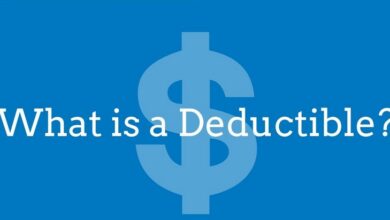Power of a Proactive Insurance Strategy

In the realm of financial planning, an insurance strategy refers to a meticulously crafted plan aimed at mitigating risks and safeguarding assets through the utilization of insurance products. It involves a thoughtful combination of coverage options tailored to individual or business needs.
In the rapidly evolving landscape of today’s dynamic environment, the need for a robust insurance strategy has become more pronounced than ever. Unforeseen events, economic fluctuations, and global uncertainties underscore the significance of a well-structured insurance plan as a fundamental pillar of financial stability.
An effective insurance strategy lays the foundation for comprehensive financial security. By strategically selecting insurance products, individuals and businesses can shield themselves from potential financial setbacks, ensuring a resilient financial future in the face of adversity.
Understanding Your Insurance Needs
A. Assessing Personal and Business Risks
1. Identifying Key Assets
Before formulating an insurance strategy, a thorough assessment of personal and business assets is imperative. Identifying key assets provides clarity on what needs protection and helps prioritize coverage areas.
2. Evaluating Potential Threats
Understanding the spectrum of potential risks is crucial. A comprehensive risk evaluation allows for the identification of specific threats, enabling the customization of insurance coverage to address and mitigate these risks effectively.
B. Tailoring Coverage to Individual Requirements
1. Customizing Policies for Maximum Benefit
Tailoring insurance policies to individual requirements involves aligning coverage options with specific needs. This customization ensures that the insurance strategy is not only comprehensive but also maximizes benefits by addressing unique risk profiles.
2. Balancing Premium Costs with Coverage Extent
While customization is key, it’s equally important to strike a balance between premium costs and coverage extent. A judicious approach to selecting coverage ensures financial prudence, allowing individuals and businesses to protect their assets without unnecessary financial strain.
A well-crafted insurance strategy serves as a cornerstone for financial security. By understanding and evaluating risks, identifying key assets, and tailoring coverage to individual needs, individuals and businesses can navigate the uncertainties of today’s dynamic environment with confidence and resilience.
Types of Insurance Strategies
In the realm of comprehensive financial planning, insurance stands out as a fundamental pillar, offering a safeguard against unforeseen events for individuals, families, and businesses. This exploration into various insurance strategies encompasses a detailed examination of life insurance, health insurance, property and casualty insurance, and liability insurance.
Life Insurance:
Life insurance serves as a cornerstone for securing the financial well-being of loved ones. Within this realm, there are two primary categories—Term Life Insurance, providing coverage for a specified term, and Whole Life Insurance, offering lifelong coverage with an added cash value component. Integrating life insurance into long-term planning involves considerations such as estate planning and leveraging whole life insurance for wealth accumulation.
Health Insurance:
Maintaining good health is paramount, and health insurance is a key player in ensuring access to quality healthcare. Exploring options like Health Maintenance Organizations (HMOs) and Preferred Provider Organizations (PPOs), as well as High Deductible Health Plans (HDHPs) with Health Savings Accounts (HSAs), provides a nuanced understanding of comprehensive health coverage. Additionally, factoring in pre-existing conditions involves examining their impact on premiums, coverage availability, and legislative protections.
Property and Casualty Insurance:
For homeowners and businesses, protection against unforeseen events is imperative. Property and casualty insurance come into play, covering risks ranging from fire and theft to natural disasters. Home insurance for homeowners involves assessing coverage types and considering additional riders, while business property protection includes commercial property insurance and business interruption insurance.
Liability Insurance:
Liability insurance is a critical component in safeguarding against legal liabilities and financial loss. Understanding personal liability coverage scenarios and the benefits of umbrella policies enhances protection on an individual level. In the business domain, liability coverage extends to professional liability insurance, shielding against claims of negligence or errors, and general liability insurance, providing broad protection against various business-related liabilities.
Proactive Measures for Risk Mitigation
In order to effectively manage risks and enhance overall insurance strategy, it is crucial to implement proactive measures for risk mitigation. This involves a comprehensive approach that spans both property and health insurance, focusing on loss prevention strategies and wellness programs.
Loss Prevention Strategies
- Home Security Measures: To mitigate risks associated with property insurance, implementing robust home security measures is essential. This may include the installation of security systems, surveillance cameras, and reinforced entry points. Encouraging policyholders to adopt these measures not only protects their homes but also contributes to a safer community, ultimately reducing the frequency and severity of claims.
- Workplace Safety Initiatives: Businesses play a pivotal role in insurance risk management. Workplace safety initiatives can significantly lower the likelihood of accidents and injuries, thus reducing the number of workers’ compensation claims. Employers should invest in employee training programs, enforce safety protocols, and regularly assess and improve the overall safety culture within the workplace.
Wellness Programs for Health Insurance
- Promoting Healthy Lifestyles: A proactive approach to health insurance involves promoting healthy lifestyles among policyholders. Insurance providers can collaborate with healthcare professionals and wellness experts to offer resources and incentives for adopting healthier habits. These may include discounted gym memberships, nutritional counseling, and educational programs on stress management.
- Benefits of Preventive Care: Encouraging policyholders to prioritize preventive care not only fosters individual well-being but also contributes to the long-term sustainability of health insurance plans. Insurance companies can incentivize regular health check-ups, screenings, and vaccinations. Preventive care helps identify and address potential health issues early on, reducing the overall healthcare costs and enhancing the policyholder’s quality of life.
Financial Planning and Insurance
Integrating Insurance into Financial Portfolio
In the realm of financial planning, integrating insurance seamlessly into one’s portfolio is a critical aspect. Insurance plays a pivotal role in wealth preservation, acting as a safeguard against unforeseen circumstances that could potentially erode hard-earned assets. By understanding the risk factors involved, individuals can strategically allocate resources to insurance coverage, ensuring a comprehensive shield against potential financial setbacks. This involves a careful analysis of the various types of insurance available, such as life, health, and property insurance, to tailor a plan that aligns with specific financial goals.
Aligning coverage with financial goals is a fundamental step in creating a robust financial strategy. Whether it’s protecting family members in the event of an untimely demise or securing assets from unexpected disasters, insurance should be tailored to meet individual objectives. This requires a thorough assessment of one’s financial situation, taking into account factors like income, debts, and long-term aspirations. By aligning insurance coverage with these goals, individuals can enhance their overall financial resilience and mitigate potential risks effectively.
Emergency Fund and Insurance
The establishment of an emergency fund serves as a cornerstone in financial planning, providing a safety net for unexpected expenses. Insurance, in tandem with an emergency fund, creates a formidable defense against financial uncertainties. A robust financial safety net ensures that, in times of crisis, individuals have the liquidity needed to navigate through challenges without compromising their long-term financial stability.
Understanding how insurance complements emergency funds is crucial for comprehensive financial planning. While an emergency fund provides immediate access to cash for unforeseen expenses, insurance serves as a backstop for more significant and catastrophic events. The combination of both elements ensures a holistic approach to financial security, offering protection against a wide range of potential risks. By strategically intertwining insurance coverage with emergency funds, individuals can fortify their financial positions and confidently pursue their wealth-building objectives.
Emerging Trends in Insurance
Technology’s Impact on Insurance
Role of AI and Big Data:
In the dynamic landscape of the insurance industry, the integration of Artificial Intelligence (AI) and Big Data analytics has become pivotal. These technological advancements enable insurers to process vast amounts of data efficiently, enhancing risk assessment, underwriting processes, and claims management. AI algorithms contribute to predictive modeling, aiding in the identification of potential risks and fraud prevention. Big Data, on the other hand, facilitates personalized policies by analyzing individual behaviors and trends. The evolving synergy between AI and Big Data continues to redefine the insurance sector, fostering innovation and efficiency.
Insurtech Innovations:
The rise of Insurtech, a portmanteau of insurance and technology, is transforming the insurance landscape. Insurtech companies leverage cutting-edge technologies, such as blockchain and Internet of Things (IoT), to streamline operations and enhance customer experiences. Blockchain ensures secure and transparent transactions, reducing fraud risks, while IoT devices provide real-time data for personalized risk assessments. The collaboration between traditional insurers and Insurtech entities is fostering a culture of innovation, driving the industry towards a more agile and customer-centric future.
Sustainable and Ethical Insurance Practices
Green Insurance Initiatives:
As environmental concerns take center stage, the insurance industry is witnessing a shift towards sustainable and eco-friendly practices. Green insurance initiatives aim to provide coverage for climate-related risks and encourage policyholders to adopt environmentally conscious behaviors. Insurers are increasingly incorporating renewable energy projects into their portfolios, aligning their investments with sustainable development goals. By offering incentives for eco-friendly practices and creating policies that address climate-related risks, the insurance sector is playing a vital role in fostering a more sustainable and resilient global economy.
Socially Responsible Policies:
Ethical considerations are gaining prominence in insurance, with a growing emphasis on socially responsible policies. Insurers are increasingly integrating social responsibility into their business models, addressing issues such as diversity, inclusion, and community development. This includes crafting policies that promote fairness, equality, and support for marginalized communities. Socially responsible insurance practices extend beyond profit-making to contribute positively to societal well-being, reflecting a broader awareness of the industry’s role in shaping a more just and equitable world.
Choosing the Right Insurance Provider
Choosing the right insurance provider is a crucial aspect of developing a comprehensive insurance strategy. This process involves diligent research and evaluation of various factors to ensure that the selected provider aligns with your specific needs and preferences.
In the initial phase of researching insurance companies, it is essential to delve into their reputation and customer reviews. Assessing how a company is perceived by its clients provides valuable insights into the level of customer satisfaction and the overall quality of service. Additionally, online platforms and review websites can offer a wealth of information regarding the company’s performance in addressing claims and handling customer concerns.
Financial stability is another critical factor to consider when selecting an insurance provider. Evaluating the financial health of a company ensures its ability to fulfill its contractual obligations in the long run. A financially stable insurer is better equipped to withstand economic fluctuations and unforeseen challenges, providing policyholders with greater confidence and security.
The evaluation process extends to assessing the insurer’s financial ratings, which are indicative of its solvency and reliability. Agencies such as Standard & Poor’s, Moody’s, and A.M. Best assign ratings based on the insurer’s financial strength, providing a quantitative measure of its ability to meet policyholder claims. A high rating from these agencies can serve as a positive indicator of the insurer’s financial standing.
Moving on to the second phase of the process, evaluating policy terms and conditions is imperative for making an informed decision. Key clauses within the insurance policy warrant careful examination to understand the extent of coverage, exclusions, and limitations. Provisions related to deductibles, coverage limits, and claim procedures should be thoroughly reviewed to ensure they align with your risk tolerance and expectations.
Transparency in policy disclosures is a pivotal aspect of a trustworthy insurance provider. A reputable insurer should provide clear and comprehensive information about the terms and conditions of their policies, making it easy for policyholders to understand the coverage they are purchasing. Ambiguities in policy documents can lead to misunderstandings during claims processing, highlighting the importance of transparency in communication between the insurer and policyholder.
Common Misconceptions About Insurance
Insurance is a crucial aspect of financial planning, providing protection and peace of mind in times of uncertainty. However, several misconceptions surround the realm of insurance, perpetuating myths that may lead individuals to make uninformed decisions. This article aims to debunk two prevalent misconceptions – the idea of insurance as an investment and the misconception that one-size-fits-all policies are suitable for everyone.
Myth-busting Insurance Concepts
Insurance as an Investment:
One common misconception is viewing insurance as an investment vehicle. While certain insurance products have an investment component, such as cash value in whole life insurance, it’s important to distinguish between protection and investment. The primary purpose of insurance is to safeguard against financial risks, such as health issues, accidents, or death, rather than generating returns. Individuals often fall into the trap of expecting substantial financial gains from their insurance policies, neglecting the primary purpose of coverage. Understanding the distinct roles of insurance and investments is crucial for making informed financial decisions.
One-Size-Fits-All Policies:
Another prevalent myth is the belief that one-size-fits-all insurance policies are suitable for everyone. In reality, individuals have unique circumstances, needs, and financial goals, making it essential to tailor insurance coverage accordingly. A generic, standardized policy might not adequately address specific risks or provide sufficient coverage for an individual’s situation. Factors such as age, health condition, lifestyle, and financial goals play a pivotal role in determining the appropriate type and amount of coverage. Customizing insurance policies ensures that individuals receive the protection they need without overpaying for unnecessary coverage or being underinsured in critical areas.
Insurance Strategy: FAQs
A. What is the best type of life insurance for me?
Choosing the best type of life insurance depends on individual needs and financial goals. Term life insurance offers affordable coverage for a specific term, while whole life insurance provides lifelong coverage with a cash value component. Consider factors like budget, coverage duration, and investment preferences when making a decision.
B. How does insurance play a role in retirement planning?
Life insurance can be a crucial component of retirement planning. Some policies, like permanent life insurance, accumulate cash value over time, providing a potential source of funds during retirement. Additionally, life insurance death benefits can offer financial support for surviving family members, reducing the need for them to dip into retirement savings.
C. Can I switch insurance providers without losing coverage?
In many cases, you can switch insurance providers without losing coverage. However, it’s essential to carefully review the new policy’s terms and conditions to ensure they meet your needs. Timely transition and coordination between old and new policies can help maintain continuous coverage during the switch.
D. Is it necessary to have both health and life insurance?
Health and life insurance serve different purposes. Health insurance covers medical expenses, while life insurance provides financial protection to beneficiaries in case of the policyholder’s death. Both are crucial for comprehensive financial planning, addressing different aspects of risk and protection.
E. What factors influence insurance premiums?
Insurance premiums are influenced by various factors, including age, health status, lifestyle, coverage amount, and type of insurance. For example, smokers may pay higher premiums for life insurance. Understanding these factors and adopting healthy habits can contribute to more affordable insurance rates.
F. How often should I review and update my insurance strategy?
Regularly review and update your insurance strategy, especially during significant life events like marriage, the birth of a child, or a career change. Changes in your financial situation or lifestyle may necessitate adjustments to ensure your insurance coverage aligns with your current needs and goals.
G. Are online insurance quotes reliable?
Online insurance quotes can provide a preliminary estimate, but their accuracy depends on the information provided. To ensure reliability, verify details with insurance providers directly and consider consulting an insurance professional for a comprehensive assessment tailored to your specific circumstances.
H. Can insurance coverages be customized for business needs?
Yes, insurance coverages can be customized for business needs. Business owners should consider policies like business liability insurance, key person insurance, and property insurance to address specific risks associated with their industry and operations.
I. What is the role of deductibles in insurance policies?
Deductibles are the amount policyholders must pay before their insurance coverage kicks in. Higher deductibles often result in lower premiums, but it’s essential to strike a balance that aligns with your financial capability. Evaluate your risk tolerance and ability to cover out-of-pocket expenses when choosing deductible amounts.
J. How does insurance protect against natural disasters?
Insurance can provide protection against natural disasters through policies like homeowners or renters insurance. These policies typically cover damage to property and belongings caused by events such as earthquakes, floods, hurricanes, or wildfires. Understanding the specific terms and coverage limits is crucial to ensure adequate protection in the event of a natural disaster.



